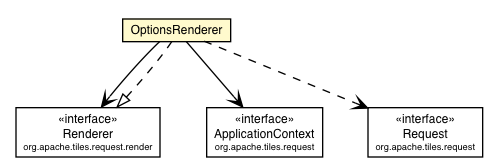Provides a custom "options" syntax for attributes.
The first option that can be rendered is.
Comes from
The Ultimate View article.
Actual rendering is delegated to the TypeDetectingRenderer that's supplied in the constructor.
For example:
"/WEB-INF/tiles/fragments/${options[myoptions]}/content.jsp"
given the myptions list-attribute is defined like:
<put-list-attribute name="myoptions">
<add-list-attribute>
<add-attribute value="car"/>
<add-attribute value="vechile"/>
<add-attribute value="advert"/>
</add-list-attribute>
</put-list-attribute>
will look for content.jsp
first in "/WEB-INF/tiles/fragments/car/" then
second in "/WEB-INF/tiles/fragments/vechile/" and
last in "/WEB-INF/tiles/fragments/advert".
Currently only supports one occurrance of such an "option" pattern in the attribute's value.
Limitation: "looking" for templates is implemented using applicationContext.getResource(..)
therefore the option values in the options list need to be visible as applicationResources.
The attribute found and rendered is cached so to improve performance on subsequent lookups.
The default cache time-to-live is
300000L, specified by
DEFAULT_CACHE_LIFE.
It can be customised by setting the system property , see
CACHE_LIFE_PROPERTY.
Setting it to zero will disable the cache.

